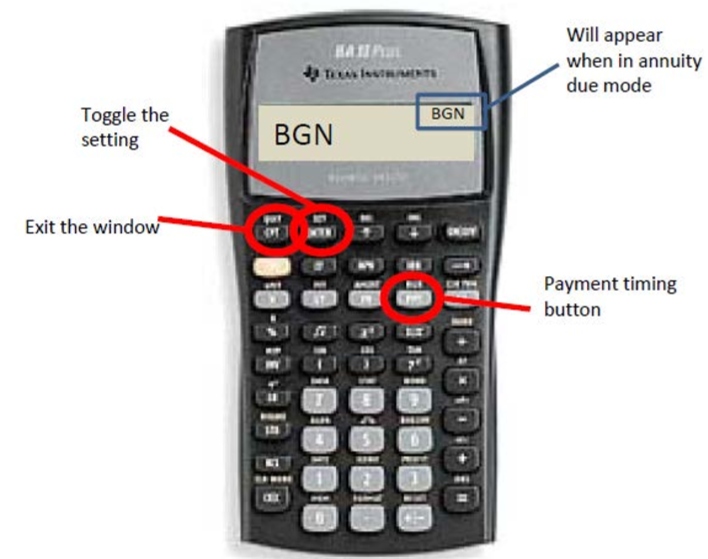11.S: Summary
- Page ID
- 34111
\( \newcommand{\vecs}[1]{\overset { \scriptstyle \rightharpoonup} {\mathbf{#1}} } \)
\( \newcommand{\vecd}[1]{\overset{-\!-\!\rightharpoonup}{\vphantom{a}\smash {#1}}} \)
\( \newcommand{\dsum}{\displaystyle\sum\limits} \)
\( \newcommand{\dint}{\displaystyle\int\limits} \)
\( \newcommand{\dlim}{\displaystyle\lim\limits} \)
\( \newcommand{\id}{\mathrm{id}}\) \( \newcommand{\Span}{\mathrm{span}}\)
( \newcommand{\kernel}{\mathrm{null}\,}\) \( \newcommand{\range}{\mathrm{range}\,}\)
\( \newcommand{\RealPart}{\mathrm{Re}}\) \( \newcommand{\ImaginaryPart}{\mathrm{Im}}\)
\( \newcommand{\Argument}{\mathrm{Arg}}\) \( \newcommand{\norm}[1]{\| #1 \|}\)
\( \newcommand{\inner}[2]{\langle #1, #2 \rangle}\)
\( \newcommand{\Span}{\mathrm{span}}\)
\( \newcommand{\id}{\mathrm{id}}\)
\( \newcommand{\Span}{\mathrm{span}}\)
\( \newcommand{\kernel}{\mathrm{null}\,}\)
\( \newcommand{\range}{\mathrm{range}\,}\)
\( \newcommand{\RealPart}{\mathrm{Re}}\)
\( \newcommand{\ImaginaryPart}{\mathrm{Im}}\)
\( \newcommand{\Argument}{\mathrm{Arg}}\)
\( \newcommand{\norm}[1]{\| #1 \|}\)
\( \newcommand{\inner}[2]{\langle #1, #2 \rangle}\)
\( \newcommand{\Span}{\mathrm{span}}\) \( \newcommand{\AA}{\unicode[.8,0]{x212B}}\)
\( \newcommand{\vectorA}[1]{\vec{#1}} % arrow\)
\( \newcommand{\vectorAt}[1]{\vec{\text{#1}}} % arrow\)
\( \newcommand{\vectorB}[1]{\overset { \scriptstyle \rightharpoonup} {\mathbf{#1}} } \)
\( \newcommand{\vectorC}[1]{\textbf{#1}} \)
\( \newcommand{\vectorD}[1]{\overrightarrow{#1}} \)
\( \newcommand{\vectorDt}[1]{\overrightarrow{\text{#1}}} \)
\( \newcommand{\vectE}[1]{\overset{-\!-\!\rightharpoonup}{\vphantom{a}\smash{\mathbf {#1}}}} \)
\( \newcommand{\vecs}[1]{\overset { \scriptstyle \rightharpoonup} {\mathbf{#1}} } \)
\( \newcommand{\vecd}[1]{\overset{-\!-\!\rightharpoonup}{\vphantom{a}\smash {#1}}} \)
\(\newcommand{\avec}{\mathbf a}\) \(\newcommand{\bvec}{\mathbf b}\) \(\newcommand{\cvec}{\mathbf c}\) \(\newcommand{\dvec}{\mathbf d}\) \(\newcommand{\dtil}{\widetilde{\mathbf d}}\) \(\newcommand{\evec}{\mathbf e}\) \(\newcommand{\fvec}{\mathbf f}\) \(\newcommand{\nvec}{\mathbf n}\) \(\newcommand{\pvec}{\mathbf p}\) \(\newcommand{\qvec}{\mathbf q}\) \(\newcommand{\svec}{\mathbf s}\) \(\newcommand{\tvec}{\mathbf t}\) \(\newcommand{\uvec}{\mathbf u}\) \(\newcommand{\vvec}{\mathbf v}\) \(\newcommand{\wvec}{\mathbf w}\) \(\newcommand{\xvec}{\mathbf x}\) \(\newcommand{\yvec}{\mathbf y}\) \(\newcommand{\zvec}{\mathbf z}\) \(\newcommand{\rvec}{\mathbf r}\) \(\newcommand{\mvec}{\mathbf m}\) \(\newcommand{\zerovec}{\mathbf 0}\) \(\newcommand{\onevec}{\mathbf 1}\) \(\newcommand{\real}{\mathbb R}\) \(\newcommand{\twovec}[2]{\left[\begin{array}{r}#1 \\ #2 \end{array}\right]}\) \(\newcommand{\ctwovec}[2]{\left[\begin{array}{c}#1 \\ #2 \end{array}\right]}\) \(\newcommand{\threevec}[3]{\left[\begin{array}{r}#1 \\ #2 \\ #3 \end{array}\right]}\) \(\newcommand{\cthreevec}[3]{\left[\begin{array}{c}#1 \\ #2 \\ #3 \end{array}\right]}\) \(\newcommand{\fourvec}[4]{\left[\begin{array}{r}#1 \\ #2 \\ #3 \\ #4 \end{array}\right]}\) \(\newcommand{\cfourvec}[4]{\left[\begin{array}{c}#1 \\ #2 \\ #3 \\ #4 \end{array}\right]}\) \(\newcommand{\fivevec}[5]{\left[\begin{array}{r}#1 \\ #2 \\ #3 \\ #4 \\ #5 \\ \end{array}\right]}\) \(\newcommand{\cfivevec}[5]{\left[\begin{array}{c}#1 \\ #2 \\ #3 \\ #4 \\ #5 \\ \end{array}\right]}\) \(\newcommand{\mattwo}[4]{\left[\begin{array}{rr}#1 \amp #2 \\ #3 \amp #4 \\ \end{array}\right]}\) \(\newcommand{\laspan}[1]{\text{Span}\{#1\}}\) \(\newcommand{\bcal}{\cal B}\) \(\newcommand{\ccal}{\cal C}\) \(\newcommand{\scal}{\cal S}\) \(\newcommand{\wcal}{\cal W}\) \(\newcommand{\ecal}{\cal E}\) \(\newcommand{\coords}[2]{\left\{#1\right\}_{#2}}\) \(\newcommand{\gray}[1]{\color{gray}{#1}}\) \(\newcommand{\lgray}[1]{\color{lightgray}{#1}}\) \(\newcommand{\rank}{\operatorname{rank}}\) \(\newcommand{\row}{\text{Row}}\) \(\newcommand{\col}{\text{Col}}\) \(\renewcommand{\row}{\text{Row}}\) \(\newcommand{\nul}{\text{Nul}}\) \(\newcommand{\var}{\text{Var}}\) \(\newcommand{\corr}{\text{corr}}\) \(\newcommand{\len}[1]{\left|#1\right|}\) \(\newcommand{\bbar}{\overline{\bvec}}\) \(\newcommand{\bhat}{\widehat{\bvec}}\) \(\newcommand{\bperp}{\bvec^\perp}\) \(\newcommand{\xhat}{\widehat{\xvec}}\) \(\newcommand{\vhat}{\widehat{\vvec}}\) \(\newcommand{\uhat}{\widehat{\uvec}}\) \(\newcommand{\what}{\widehat{\wvec}}\) \(\newcommand{\Sighat}{\widehat{\Sigma}}\) \(\newcommand{\lt}{<}\) \(\newcommand{\gt}{>}\) \(\newcommand{\amp}{&}\) \(\definecolor{fillinmathshade}{gray}{0.9}\)Key Concepts
11.1: Fundamentals of Annuities
- Understanding what an annuity is
- The four different types of annuities
- The difference between annuities and single payments
- The annuity timeline format
11.2: Future Value of Annuities
- The future value of ordinary annuities
- Variable changes in future value annuity calculations
- The future value of annuities due
11.3: Present Value of Annuities
- The present value of both ordinary annuities and annuities due
- Variable changes in present value annuity calculations
- Applying both future value and present value calculations to loans
- Determining loan balances
- Selling loan contracts between companies
11.4: Annuity Payment Amounts
- Calculating the annuity payment amount for both ordinary annuities and annuities due
11.5: Number of Annuity Payments
- Calculating the number of annuity payments (term) for both ordinary annuities and annuities due
- What to do when N has decimals
11.6: Annuity Interest Rates
- Calculating the interest rate for both ordinary annuities and annuities due
The Language of Business Mathematics
- annuity
-
A continuous stream of equal periodic payments from one party to another for a specified period of time to fulfill a financial obligation.
- annuity payment
-
The dollar amount of the equal periodic payment in an annuity environment.
- due
-
Annuity payments that are each made at the beginning of a payment interval.
- future value of any annuity
-
The sum of all the future values for all of the annuity payments when they are moved to the end of the last payment interval.
- general annuity
-
An annuity in which the payment frequency and compounding frequency are unequal.
- general annuity due
-
An annuity where payments are made at the beginning of the payment intervals and the payment and compounding frequencies are unequal. The first payment occurs on the same date as the beginning of the annuity, while the end of the annuity is one payment interval after the last payment.
- ordinary
-
Annuity payments that are each made at the end of a payment interval; this is the most common form of an annuity payment.
- ordinary general annuity
-
An annuity where payments are made at the end of the payment intervals and the payment and compounding frequencies are unequal. The first payment occurs one interval after the beginning of the annuity, while the last payment is on the same date as the end of the annuity.
- ordinary simple annuity
-
An annuity where payments are made at the end of the payment intervals and the payment and compounding frequencies are equal. The first payment occurs one interval after the beginning of the annuity while the last payment is on the same date as the end of the annuity.
- payment interval
-
The amount of time between each continuous and equal annuity payment.
- payment frequency
-
The number of annuity payments in a complete year.
- present value of any annuity
-
The sum of all the present values for all of the annuity payments when they are moved to the beginning of the first payment interval.
- simple annuity
-
An annuity in which the payment frequency and compounding frequency are equal.
- simple annuity due
-
An annuity where payments are made at the beginning of the payment intervals and the payment and compounding frequencies are equal. The first payment occurs on the same date as the beginning of the annuity, while the end of the annuity is one payment interval after the last payment.
The Formulas You Need to Know
Symbols Used
\(CY\) = compounding per year or compounding frequency
\(FV_{DUE}\) = future value of annuity due
\(FV_{ORD}\) = future value of an ordinary annuity
\(IY\) = nominal interest rate
\(i\) = periodic interest rate
\(N\) = number of annuity payments
\(PY\) = payments per year or payment frequency
\(PMT\) = annuity payment amount
\(PV_{DUE}\) = present value of annuity due
\(PV_{ORD}\) = present value of ordinary annuity
Years = the term of the annuity
Formulas Introduced
Formula 11.1 Number of Annuity Payments:
\[N = PY × \text{ Years} \nonumber \]
Formula 11.2 Ordinary Annuity Future Value:
\[FV_{ORD}=PMT\left[\dfrac{\left[(1+i)^{\frac{CY}{PY}}\right]^{N}-1}{(1+i)^{\frac{CY}{PY}}-1}\right] \nonumber \]
Formula 11.3 Annuity Due Future Value:
\[FV_{DUE}=PMT\left[\dfrac{\left[(1+i)^{\frac{CY}{PY}}\right]^{N}-1}{(1+i)^{\frac{CY}{PY}}-1}\right] \times(1+i)^{\frac{CY}{PY}} \nonumber \]
Formula 11.4 Ordinary Annuity Present Value:
\[PV_{ORD}=PMT\left[\dfrac{1-\left[\frac{1}{(1+i)^{\frac{C Y}{PY}}}\right]^{N}}{(1+i)^{\frac{CY}{PY}-1}}\right] \nonumber \]
Formula 11.5 Annuity Due Present Value:
\[PV_{DUE}=PMT\left[\dfrac{1-\left[\frac{1}{(1+i)^{\frac{CY}{PY}}}\right]^{N}}{(1+i)^{\frac{CY}{PY}}-1}\right] \times(1+i)^{\frac{CY}{PY}} \nonumber \]
Technology
Calculator

Annuity Type Settings
- The calculator default is for END mode, which is the ordinary annuity.
- The annuity type (payment timing) setting can be found on the second shelf above the PMT key. This function works as a toggle.
- To toggle the setting, complete the following sequence:
- 2nd BGN (the current payment timing of END or BGN is displayed)
- 2nd SET (it toggles to the other setting)
- 2nd Quit (to get out of the window)
- When the calculator is in annuity due mode, a tiny BGN is displayed in the upper right of your calculator.


